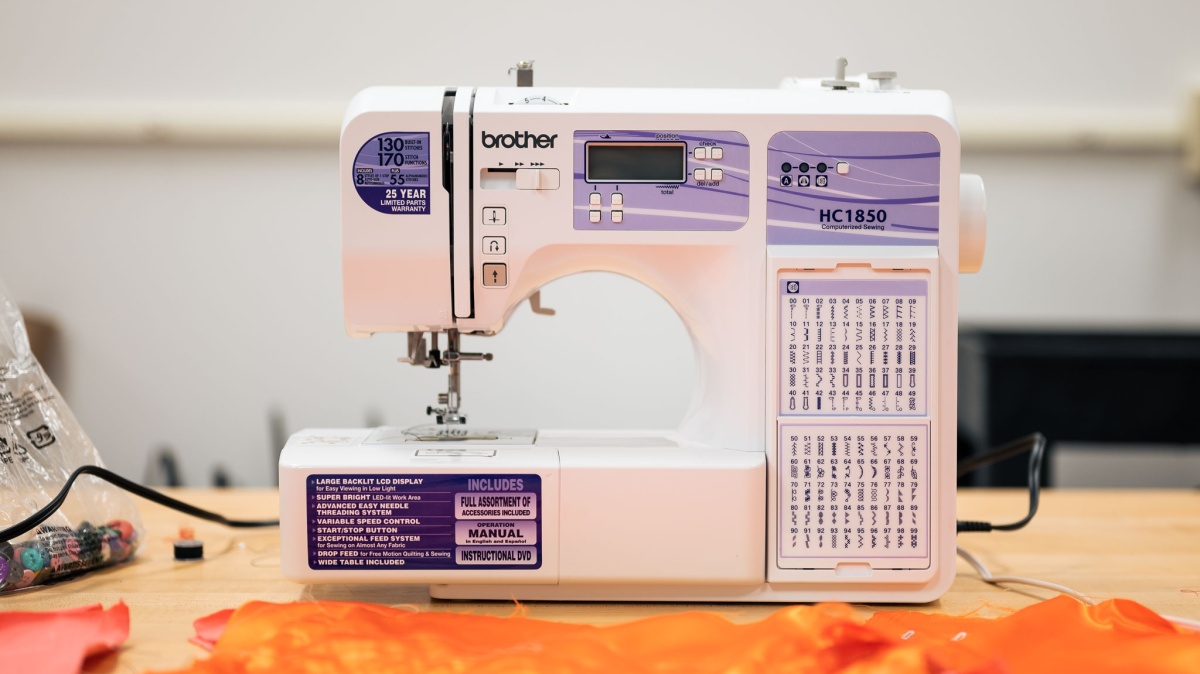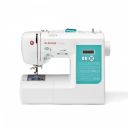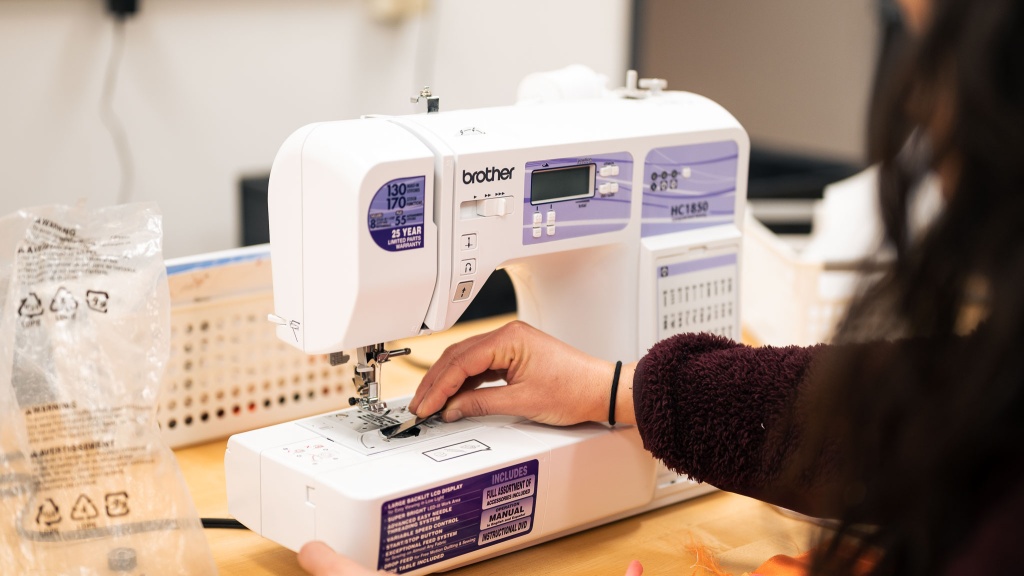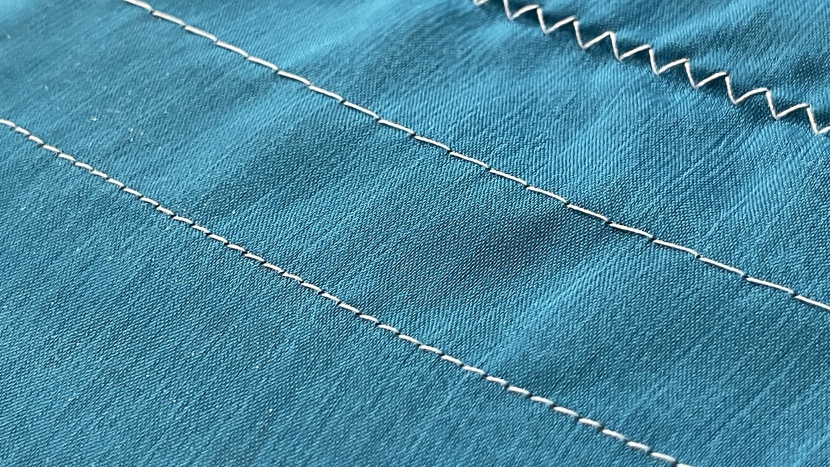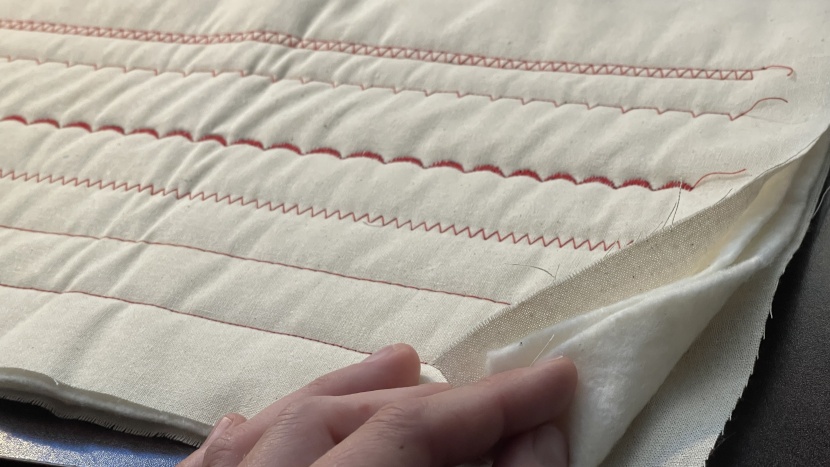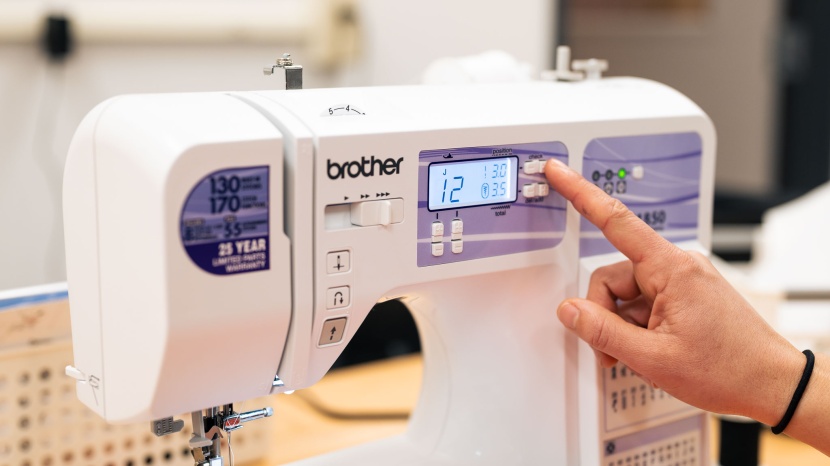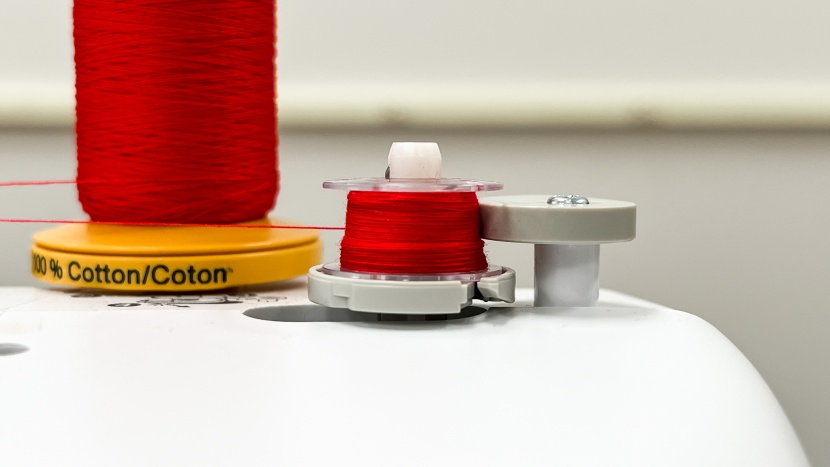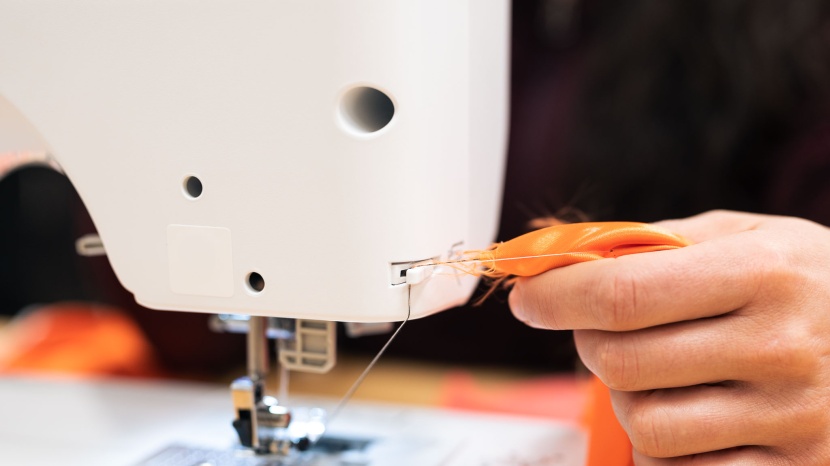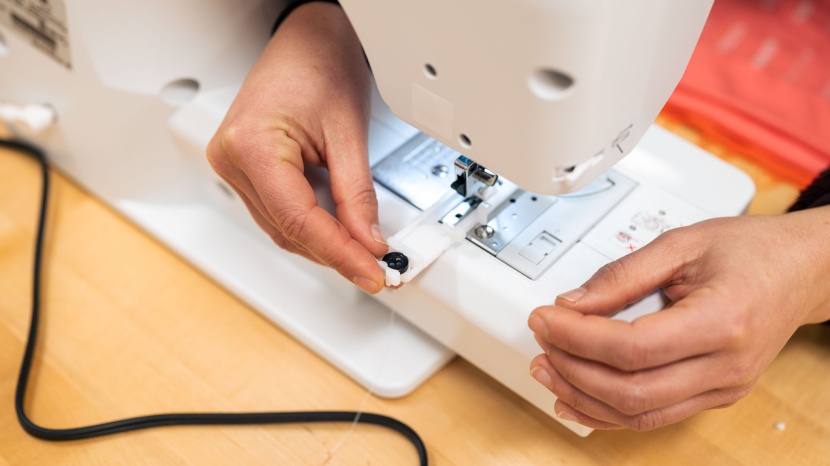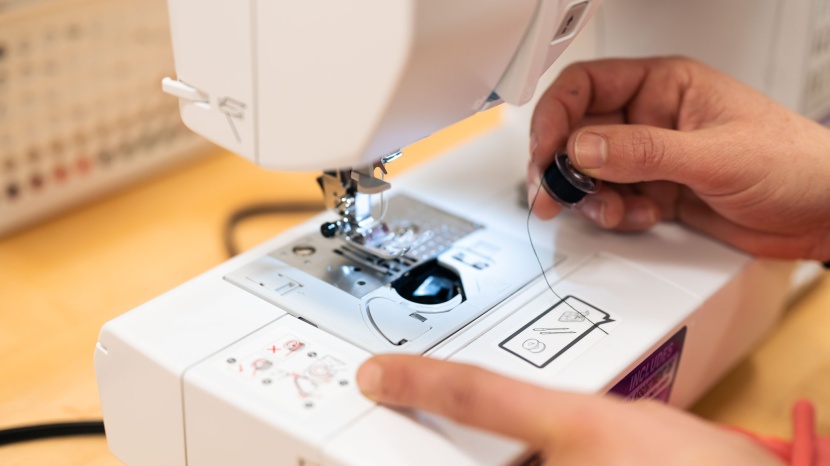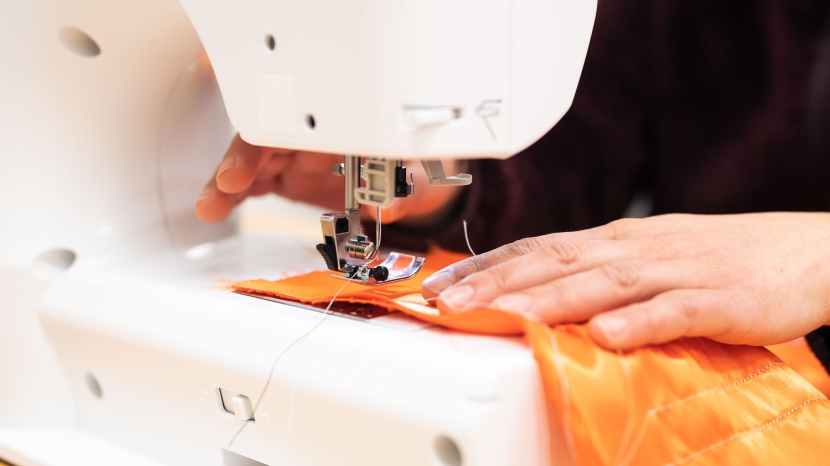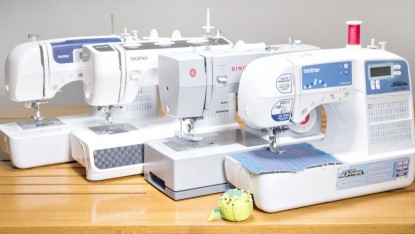Our Verdict
Compare to Similar Products
 This Product Brother HC1850 | |||||
|---|---|---|---|---|---|
| Awards | Best Overall Sewing Machine for Most People | Best High-Value Buttonhole Maker | Best Bang for Your Buck | ||
| Price | $260 List $259.99 at Amazon | $240 List $239.99 at Amazon | $300 List | $230 List $229.99 at Amazon | $150 List $143.99 at Amazon |
Overall Score  |
|||||
| Star Rating | |||||
| Bottom Line | A simple to use option with lots of stitches, an excellent screen, and an affordable price, but isn't the cleanest buttonhole maker | A user-friendly model that works well on all the basics except for buttonholes, and comes at an affordable price | This is a great machine for just about everyone, although a serious sewist may want a machine with better quality stitching | An inexpensive, easy-to-use sewing machine that provides consistent sewing but has some trouble with buttonholes and winding the bobbin | A beginner would really like this machine since it's easy-to-use and inexpensive |
| Rating Categories | Brother HC1850 | Brother CS7000X | Singer 7258 Stylist | Brother XR9550 | Brother CS5055 |
| Sewing (45%) | |||||
| Ease of use (35%) | |||||
| Buttonholes (20%) | |||||
| Specifications | Brother HC1850 | Brother CS7000X | Singer 7258 Stylist | Brother XR9550 | Brother CS5055 |
| # of Built-in Stitches | 185 | 70 | 100 | 165 | 60 |
| # of Buttonhole Styles | 8 | 7 | 6 | 8 | 7 |
| Automatic Bobbin Winder | Yes | Yes | Yes | Yes | Yes |
| Manufacturer Stated Maximum Sewing Speed (stitches per minute) | 850 | 750 | 750 | 850 | 750 |
| Computerized? | Yes | Yes | Yes | Yes | Yes |
| Buttonhole Sewing (number of steps) | 1-Step | 1-Step | 1-Step | 1-Step | 1-Step |
| Maximum Stitch Width | 7mm | 7mm | 6mm | 7mm | 7mm |
| Maximum Stitch Length | 5mm | 5mm | 4.8mm | 5mm | 5mm |
| Thread Cutter | Built-in | Built-in | Built-in | Built-in | Built-in |
| Cover | No | Hard | Soft | Hard | No |
| Free Arm | Yes | Yes | Yes | Yes | Yes |
| Measured Weight | 10.5 lbs | 10.4 lbs | 14.6 lbs | 12.1 Ibs | 10.8 lbs |
Our Analysis and Test Results
The Brother HC1850 is a high-value computerized sewing machine. It's one of the easiest machines to move, set up, and use, weighing a reasonable 10.5 pounds. It features a light-up screen with large numerals and easy scrolling forward and backward. With 185 stitches to choose from, this machine has options for days. For most at-home sewing enthusiasts, the HC1850 has everything you'll need and more — and all for an affordable price.
Sewing
We put every machine through the wringer, sewing six different stitches into four different fabrics. For direct comparisons, we used the default stitch settings to see how they did, sewing in hems, straight stitches, and decorative lines on silk, satin, cotton jersey, and chiffon.
The HC1850 performed well across the board, even using just the default settings. The minor tension issues we found when sewing difficult stitches like a scallop into a challenging fabric like chiffon can be easily changed in the settings.
Across all our test fabrics, the HC1850 had a few minor challenges getting the correct tension on scallop and triangle stitches. While the scalloped stitches, on default settings, mostly looked nice and even on the front side of the fabric, looking at the wrong side revealed the top thread was too loose and pulled through to the backside. The decorative triangular stitch had similar problems, with the top thread defaulting a bit too loose, pulling the corners of the triangles through to the wrong side of the fabric. For a single-sided project, this isn't a dealbreaker, and for every stitch, the tension can be changed in the settings to find precisely that middle ground that works for your fabric.
We're very impressed by some of the basic stitches the HC1850 can do. On some difficult fabrics to work with, like silk and chiffon, this model produced running and basting stitches that didn't bunch the fabric at all, leaving the surface perfectly flat. If you're a fan of cute stitches, this machine has 185 different options, some of which are purely decorative, like tiny trains and airplanes, small houses with trees, and other unique choices to embellish your projects.
Our testing also included basic project details like adding zippers, joining multiple layers of heavy denim, and sewing double layers of batting into a quilt. Adding a zipper with the HC1850 was accomplished with relative ease. Its foot isn't the most forgiving when trying to slide past the zipper pull, but we still managed to install the zipper with straight stitches on each side. This machine joined a whopping eight layers of 12-ounce denim with absolute ease. And sewing together layers of cotton muslin with two layers of quilt batting proved no more challenging than sewing a single layer of fabric.
Ease of Use
While most computerized machines, like the Brother HC1850, have a ton of features that make them easy to use, some are still more user-friendly than others. Even up against machines that cost much more than this one, the HC1850 is one of our favorites to use.
The HC1850 has a large display screen with easy-to-read numbers that light up. Selecting the stitch you want out of all 185 available options is a cinch, with multiple buttons for easy scrolling through your choices. There's no worry about passing the stitch code you want, as this machine lets you move forward or backward through selection.
With some trial and error, winding the bobbins on the HC1850 proved simple. After some winding, though, our machine stopped going all the way up and down, causing the thread to end slightly lopsided when the bobbin was fully loaded. The needle threading mechanism is easy enough to use, and we appreciate that the thread cutter is located on the back left corner of the machine. While some models have the thread cutter placed in the center of the lefthand side, we much prefer those thread cutters that are on the corner. This spot is a far more intuitive placement for the natural motion of drawing out your thread and slicing it cleanly when you're ready to remove your project from the machine.
The needle stop position function of the HC1850 is customizable. By changing a few settings on the machine, you can make it so that every time you press the button, the needle always stops up (for easy fabric removal) or down (for cleaner rotation of projects).
The work area has a small light, as nearly every sewing machine does these days, but it's not our favorite light. While bright in the center, it's concentrated in just a small area. It also creates a fairly large and distracting shadow of the needle moving up and down as you work. Though we didn't factor the manuals into our scoring system, the Brother manual is robust and full of helpful information about all the settings and stitches available on the machine.
Buttonholes
If you love to make things with buttonholes in them, this is the one area where the Brother HC1850 is just an average performer.
Measuring your button to give this machine the information it needs to create the buttonhole is simple. The button foot on all the Brother models we tested is the same, and makes it easy to measure your button and line up the machine where you want the hole in your fabric. The HC1850 automatically stops itself at the end of the buttonhole, reinforcing each end by zig-zagging over the straight stitching.
However, there are some details we don't love about the buttonholes made by the HC1850. Like all the Brother sewing machines we tested, this model tends to skip a bit right at the beginning of the buttonhole, jumping backward on the fabric. If your thread is the same color as your fabric, you may not notice it too much. Using contrasting colors, this outward jut of stitching is an obvious eyesore and looks quite sloppy.
We also made buttonholes on several types of fabric with each machine. Stretchy cotton jersey is a challenging fabric to make buttonholes on, and the zig-zag pattern that the HC1850 created as a “stretch” buttonhole certainly worked but had wide stitches that don't look very tidy. This machine made a slightly better buttonhole in silk, but it still wasn't very pretty. Buttonholes worked the best on cotton muslin. But overall, if you want to make a lot of neat, clean buttonholes, this sewing machine probably isn't up for the task.
Should You Buy the Brother HC1850?
The HC1850 is an excellent machine for the average sewer-making projects at home. It has more stitch options than most people will know what to do with and is exceptionally easy to use. While most modern sewing machines are computerized, this one has all the right settings and functionality, making it a great all-around home helper — as long as you're not a buttonhole-making fiend. And for a very reasonable price, this machine is a great performer and a high-value commodity.
What Other Sewing Machines Should You Consider?
With the impressive performance, functionality, and price of the Brother HC1850, this is the sewing machine we recommend for most people. If you're really set on having a machine that makes excellent buttonholes, the Singer 7258 Stylist is a solid all-around option that makes superb buttonholes and doesn't cost that much more. If 185 types of stitches aren't enough for your creativity, the Singer 9960 Quantum Stylist offers a staggering 600 possible stitches. And if you are a serious seamstress or tailor looking for the best option on the market with a beefy budget, the premium-priced Juki HZL-F300 is the best model we've tested.


